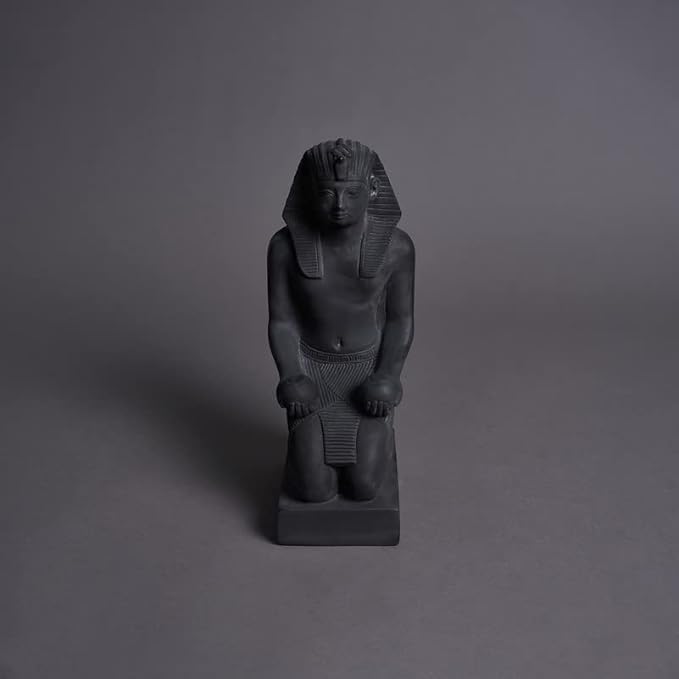Tuthmosis lll The Napoleone of Egypt

Tuthmosis lll
Thutmose III (sometimes spelled Tutmosis III) was one of ancient Egypt’s greatest pharaohs, reigning during the 18th Dynasty (1479–1425 BCE). He is often referred to as the “Napoleon of Egypt” due to his military genius and numerous successful campaigns. Here’s a summary of his legacy:
Background and Early Life
Coregency with Hatshepsut: Thutmose III became king as a child but initially ruled jointly with his stepmother and aunt, Queen Hatshepsut, who acted as regent and later declared herself pharaoh.
During Hatshepsut’s reign, he was largely sidelined but gained experience in the military.
Military Achievements
After Hatshepsut’s death, Thutmose III assumed full power and embarked on military campaigns that expanded Egypt’s empire to its greatest extent.
He led 17 campaigns, with the most famous being the Battle of Megiddo (circa 1457 BCE). This battle secured Egyptian dominance over Canaan and the Levant.
His empire stretched from Nubia in the south to the Euphrates River in the north.
Governance and Administration
Thutmose III was not only a warrior king but also a skilled administrator. He strengthened Egypt’s economy through tributes from conquered territories and established efficient governance over the empire.
He commissioned numerous building projects, including temples, statues, and obelisks, many of which still stand today.
Cultural and Religious Contributions
He was a patron of the arts and religion, promoting the worship of Amun-Ra, the chief deity of Thebes.
His monuments, particularly at Karnak Temple, reflect his devotion and achievements.
Legacy
Thutmose III is remembered as one of the most powerful and effective rulers in Egyptian history.
His military campaigns and administrative reforms ensured a period of stability and prosperity for Egypt.
His mummy was discovered in the Deir el-Bahari cache and is now housed in the Egyptian Museum in Cairo.
If you’re interested in specific monuments or artifacts related to Thutmose III, feel free to ask!

Tuthmosis lll The Napoleone of Egypt

Tuthmosis lll
Thutmose III (sometimes spelled Tutmosis III) was one of ancient Egypt’s greatest pharaohs, reigning during the 18th Dynasty (1479–1425 BCE). He is often referred to as the “Napoleon of Egypt” due to his military genius and numerous successful campaigns. Here’s a summary of his legacy:
Background and Early Life
Coregency with Hatshepsut: Thutmose III became king as a child but initially ruled jointly with his stepmother and aunt, Queen Hatshepsut, who acted as regent and later declared herself pharaoh.
During Hatshepsut’s reign, he was largely sidelined but gained experience in the military.
Military Achievements
After Hatshepsut’s death, Thutmose III assumed full power and embarked on military campaigns that expanded Egypt’s empire to its greatest extent.
He led 17 campaigns, with the most famous being the Battle of Megiddo (circa 1457 BCE). This battle secured Egyptian dominance over Canaan and the Levant.
His empire stretched from Nubia in the south to the Euphrates River in the north.
Governance and Administration
Thutmose III was not only a warrior king but also a skilled administrator. He strengthened Egypt’s economy through tributes from conquered territories and established efficient governance over the empire.
He commissioned numerous building projects, including temples, statues, and obelisks, many of which still stand today.
Cultural and Religious Contributions
He was a patron of the arts and religion, promoting the worship of Amun-Ra, the chief deity of Thebes.
His monuments, particularly at Karnak Temple, reflect his devotion and achievements.
Legacy
Thutmose III is remembered as one of the most powerful and effective rulers in Egyptian history.
His military campaigns and administrative reforms ensured a period of stability and prosperity for Egypt.
His mummy was discovered in the Deir el-Bahari cache and is now housed in the Egyptian Museum in Cairo.
If you’re interested in specific monuments or artifacts related to Thutmose III, feel free to ask!


